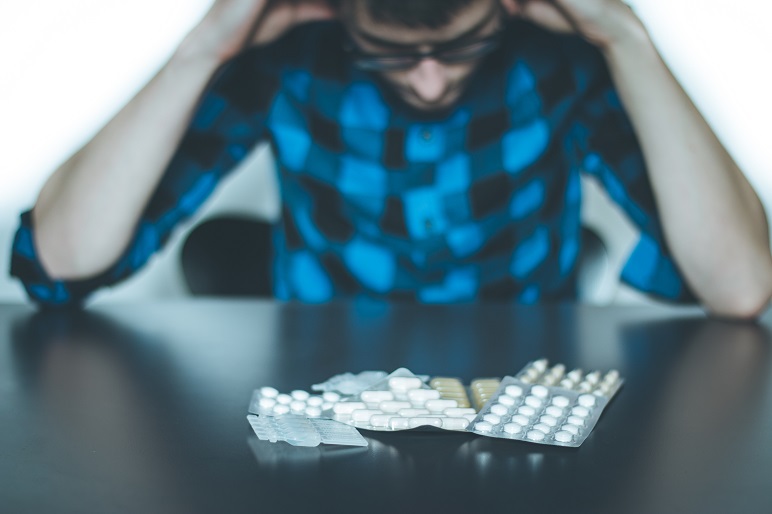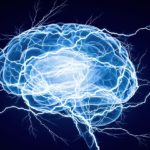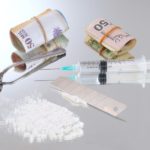Most people are only vaguely familiar with Molly, either mistaking it as another name for marijuana or knowing about it care of a name-drop from the infamous Miley Cyrus song and music video, “We Can’t Stop”, which is also where she introduced to mainstream audiences what “twerking” is all about. The thing about Molly is that it’s another variant of Ecstasy rather than another variant of cannabis.
To be more specific, Molly is just another name for MDMA or the 3,4-methylenedioxy-methamphetamine party drug. It’s like the difference between cocaine and crack cocaine, almost. It’s variants of the same thing, with Ecstasy being MDMA cut with different other drugs.
What’s the Difference Between Molly and Ecstasy?

If you’re aware of someone who uses and abuses Molly, you might be wondering about the difference between Molly and Ecstasy. For instance, you might be curious regarding whether one is potentially purer or safer than the other. You might also want to know all about each drug type. To wit:
| Drugs | Definition | Similarities | Differences | Effects and Complications |
|---|---|---|---|---|
| Molly (MDMA) |
|
|
| The primary effects of Molly or Ecstasy include the following:
|
| Ecstasy |
|
|
Many people believe that Ecstasy and Molly are different drugs altogether, with Ecstasy being more dangerous than Molly. Molly is simply another name for MDMA and Ecstasy is Molly cut with other substances.
However, any drug sold in the streets—whether they’re branded as Molly or Ecstasy—tend to be anything but pure and might all contain cuts of other drugs and adulterants, which could make either drug indistinguishable from one another. Users tend to be duped into using some strains of Molly that’s not as pure as advertised.
What Is MDMA and Its Different Forms?
MDMA refers to 3,4-methylenedioxy-methamphetamine—MDMA is that drug or chemical’s acronym. As its full name shows, it’s a type of methamphetamine or meth. It’s a manmade chemical known for its hallucinogenic and stimulant properties, like mixing acid with your coffee. Or combining shrooms with your meth. MDMA has chemical similarities to methamphetamines and other amphetamines. However, its major difference is that it contains the methylenedioxy group (-O-CH2-O-).
In other words, part of the molecule for this drug is similar in structure to mescaline, which is a hallucinogen. This is why MDMA is as stimulating and addictive as meth but at the same time it messes with your brain the same way a hallucinogen might. Meth is also known in other forms like crystal meth, speed, and so forth. Regardless, MDMA is available as either the multicolored party pill known as Ecstasy or as pure MDMA that’s nicknamed Molly.
Defining the Two MDMA Drug Types

Let’s define the different types of consumable MDMA made available for recreational use in parties and whatnot known as Molly and Ecstasy first before discussing the warning signs of Molly addiction and treatment thereof,
- Molly: “Pure” MDMA is known by the nickname of Molly. In theory, if you were to buy it without any cuts from other drugs, it produces the primary effects of Ecstasy but with more potency and with longer-lasting effects. However, street-based Molly can be cut with so many unknown chemicals that it might as well be as “pure” as Ecstasy as far as MDMA content is concerned. However, as a rule of thumb, Molly should be pure MDMA while Ecstasy has a percentage of other drugs in it. It’s commonly believed that Molly safer than Ecstasy. As discussed above, it’s not necessarily the case as with many other Schedule I substances out there since it has high abuse potential and has no medicinal use. It’s purely recreational and illegal to obtain, so it has no regulatory board regulating its use in prescription terms. In other words, you can’t be sure what drug you’re actually taking when buying street Molly. However, it’s also true that there are Molly products that are just composed of MDMA and nothing else since Molly is simply supposed to be MDMA’s nickname. Ecstasy itself is always cut with other ingredients along with an MDMA base. Ecstasy pills are manufactured to be less pure than Molly. Regardless of what your dealers or friends might claim, Molly and Ecstasy are both rooted in MDMA.
- Ecstasy: Ecstasy is just MDMA with other drugs cut into it, like additives that supposedly increase certain effects it has in your body. However, mixing drugs can have some deadly side effects, thus the view that Ecstasy is more dangerous than pure MDMA or Molly. Throughout the late 1990s and early 2000s, Ecstasy rose in prominence as the party drug of choice that doesn’t have as much of a bad rap as methamphetamine despite being a form of meth. Those multi-colored Ecstasy pills that look like multivitamins are typically cut with cocaine for that extra kick in the head in dopamine terms and street-grade meth to make its already stimulant effects extra stimulating. It’s still mostly MDMA though, so expect the same kind of hallucinogenic and stimulant effects but with additional stimulation from whatever drugs it’s cut with. The worst types of Ecstasy pills are those that don’t contain any MDMA or Molly in them at all. It is false advertising but it’s more common than you think. The best and “safest” Ecstasy type is the MDMA-base Ecstasy. It’s the tablets that partygoers swear by that are the talk of the town or at least the news media. They’re the “happy pills” that make you feel friendlier and more sexually open, so to speak. They even induce euphoria like marijuana and increased sociability or decreased inhibition like when drunk with alcohol. It’s typically cut with compounds such as paramethoxyamphetamine (PMA), methylenedioxyamphetamine (MDA), and methylenedioxyethylamphetamine (MDEA).
Signs and Symptoms of Molly Abuse

Like with any other drug out there, Molly can be overused and abused to the point of the user developing a dependence or addiction to it. A person who has abused Molly might undergo the following primary and side effects.
Signs of Molly usage considered desirable include the following:
- Euphoria
- Friendliness
- Increased energy
- Emotional warmth
- Increased empathy
- Reduced inhibitions
- Feelings of closeness
- Increased sociability
- Increased extroversion
- Enhanced sense of well-being
- Increased sexual desire or feelings
- Altered perceptions of light and sound
- Willingness to discuss emotionally charged memories
The side effects of Molly include the following:
- Chills
- Thirst
- Nausea
- Headache
- Sweating
- Confusion
- Restless legs
- Overheating
- Blurred vision
- Fast heartbeat
- Water retention
- Lack of appetite
- Distortions of time
- Hot flashes or chills
- Muscle or joint stiffness
- Involuntary jaw clenching
- Illogical or disorganized thoughts
- Clenching of teeth and jaw tightness
- Risky behavior such as promiscuous sex
- Mild detachment from oneself (depersonalization)
The complications of Molly include the following:
- Anxiety
- Seizures
- Addiction
- Faintness
- Depression
- Panic attacks
- Sleep problems
- High blood pressure
- Loss of consciousness
- High blood pressure (hypertension)
- Risk of electrolyte imbalance or brain swelling
- A marked rise in body temperature (hyperthermia)
Molly Addictiveness and Risky Behavior

The danger with using Molly or Ecstasy to excess is that these drugs under the MDMA umbrella are sometimes quite addictive. They’re meth derivatives, so of course there’s more than a bit of addiction risk from using them consistently. Frighteningly, some people who’ve only tried out Molly the first few times can become immediately addicted to the substance. It’s not a slow burn but an outright conflagration for these people with addictive tendencies.
- The Resistant: Naturally, there are also some Molly users who can use these drugs on weekends for parties and clubbing then come off of them none the worse for wear. They have addiction resistance to such drugs. However, even those who are resistant might end up succumbing to addiction after regular usage because Molly withdrawal has a side effect of crushing depression that shows up a few days later after usage. Being depressed pushes even the more resistant of users to keep using Molly to chase those blues away.
- Downward Spiral: Unlike meth or coke addiction that usually comes about due to people wishing to chase after a high, Molly triggers full-fledged addiction through its depression side effects that serve as catalysts that compel users towards using more Molly to cheer themselves up. Typically, drug-based withdrawal symptoms don’t occur until after the user in question has developed a dependence on the drug. However, you can suffer from depression after using MDMA from the get go, leading to a slippery slope into a downward spiral of sorts.
- Poor Judgment and Openness to Sex: Although Molly isn’t exactly an aphrodisiac type off drug, it’s considered and used as one a la Viagra or the infamous “Spanish Fly” because of how it induces seeming horniness within those who partake in it. This can result in poor judgment when it comes to sexual encounters, though that doesn’t automatically happen after consumption. It’s the same way being drunk can lead to sex. Some might even drink alcohol in order to make it easier to have sex. Drugs like Molly and alcohol lower your inhibitions.
- Artificial Sense of Empathy: Although humans as social beings should have a level of empathy in them in order to properly function in a given society or culture, Molly boosts your innate sense of empathy in forced or artificial ways. Some unscrupulous men at a music festival or club might even give the drug to a woman to make her feel like she loves him and wants to have sex with him even though it’s just the Molly talking. This feeling passes by the next day. However, if she’s a Molly addict, then she’ll be driven to repeat this type of promiscuous behavior in the future.
- It Will Drag Your Entire Life Down: You should overcome your obsession to acquire Molly through rehab before your life is ruined. Your addiction should be treated post-haste or else you might end up doing the same things alcoholics do, with you abandoning other interests and goals in life in order to seek more Molly consumption and hedonism. Like marijuana, it can even be considered a gateway drug to harder stuff like cocaine and methamphetamine. It doesn’t help that Ecstasy, another MDMA type, is usually cut with both coke and meth.
Drug Rehab is Needed for Molly Addiction
Treatment services such as Clarity Rehab or some other local or rehab tourism outfit typically address the debilitating effects of Molly abuse on the mind and body. They might even resolve why the addict might’ve turned towards drugs in the first place through psychiatric and psychological therapy. Therefore, it’s possible for the person to graduate from the program and develop a new life that’s free from drug abuse as long as he sticks to his treatment regimen and watches out for relapse and withdrawal symptoms.
- Treating Molly Abuse: The main demographic that’s most likely to abuse Molly include those in the 16 to 24 years old bracket. Treatment of young adults and adolescents with substance use disorders and addiction is a matter that’s quite delicate. It’s highly recommended that treatment providers for these teenagers and college-aged adults to have special training to deal with the issues that occur with such a group, such as learning how to deal with peer pressure and family problems like being a child of divorce.
- Why Inpatient Programs Are Preferred: To avail of an inpatient or outpatient program—that is the question. Molly addiction typically necessitates you being held in an inpatient or residential treatment program wherein you’re isolated from bad influences. You’re also monitored by a round robin of doctors, counselors, and therapists 24 hours a day and 7 days a week. This makes your treatment regimen a lot more impactful and intense. This isolation helps you focus more on recovery when compared to a 12-step program you’re only required to attend a few hours every week or so.
- Pushing Through The Stages of Recovery: Inpatient treatment of Molly addiction should help you get through the early stages of recovery. The staff and crew will also be there for you to help you deal with that early “crash and burn” feeling that often occurs to those who’ve chronically abused MDMA. It’s also important for you to get access to doctor-assisted withdrawal management that’s monitored by an addiction psychiatrist or pharmacist n as well as case workers and therapists.
- How to Make Outpatient Treatment Viable: If you really want to continue your schooling and/or work while undergoing treatment, then you should avail of a particularly intensive outpatient treatment program that has roughly the same weekly schedule but has aspects of inpatient monitoring and withdrawal management on top of the 12-step treatment paradigm. This is usually recommended for Molly addicts that aren’t that heavily addicted to the drug so a bit of leeway can be given for their rehab schedule options. If the addiction is severe, stick to inpatient treatment.
Use of Molly and, Ecstasy has significantly decreased since their peak usage back in the 1990s and early 2000s—Miley Cyrus advertising her use of Molly aside. However, MDMA remains a dangerous and famous drug ripe for abuse and addiction, whether it’s in its purest forms or more diluted versions.
Why Do People Use Molly Anyway?
People abuse Molly in order to experience its desirable effects, such as euphoria, friendliness, increased energy, emotional warmth, increased empathy, and reduced inhibitions. According to the National Institute on Drug Abuse (NIDA), street Molly in tablet and powder forms contained 30 percent to 40 percent MDMA, with the rest of the substance composed of cutting agents like lactose for the sake of increasing profits and reducing costs for the dealers of such drugs.
NIDA further discloses that drugs being sold as Molly or pure MDMA are probably less pure than advertised, making them more akin to Ecstasy than previously thought. That’s usually the deal with illegal drugs and a lack of regulation for their use. Since there’s no approved legal usage of Molly, dealers are free to put in cutting agents or even other drugs with their Molly supply without them having to pass some sort of regulatory quality control. This makes some stockpiles of MDMA highly dangerous since they can contain or outright be substituted for OTC medications, bath salts, ketamine, cocaine, or crystal meth.
Contact The Clarity Luxury Rehab Now for Molly Addiction Treatment
Molly addiction is similar to Ecstasy addiction because both are variations of the MDMA chemical drug. Both medical and psychological rehabilitation treatment is required to treat Molly addiction since it affects both your body and mind. Like with alcoholism, you need cognitive behavioral therapy or CBT to help you approach cravings and dependence in a reframed manner.
Medically, you might need 24/7 inpatient care and detoxification on top of withdrawal symptom treatment to keep you off the wagon. Thankfully, Clarity Luxury Drug and Alcohol Rehab in Chiang Mai, Thailand is available to offer you all you need to kick the Molly habit and then some. Contact Clarity Rehab today for more details and price quotes!






